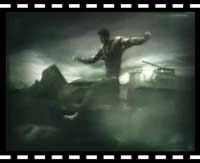The assessments included 17 tasks that asked the students to view visual resources and to demonstrate understanding of the messages conveyed, their purposes, the contexts in which they were appropriate, or the particular techniques used. Visual material is a prominent part of life in our world. It takes many forms, such as illustrations in books, photographs, comics and cartoons, posters, brochures, advertisements, films and television programmes. Students need to learn to make sense of this material, and to become discriminating
users of it.
 |
|
Fifteen tasks were identical for both year 4 and year 8 students; two tasks were administered only to year 8 students. Eight are trend tasks (fully described with data for both 2002 and 2006), two are released tasks (fully described with data for 2006 only) and seven are link tasks (to be used again in 2010, so only partially described here).
The tasks are presented in the three sections: trend tasks, then released tasks and finally link tasks. Within each section, tasks administered to both year 4 and year 8 students are presented first, followed by tasks administered only to year 8 students.
Averaged across 191 task components administered to both year 4 and year 8 students, eight percent more year 8 than year 4 students succeeded with these components. Year 8 students performed better on 173 of the 191 components. As in the past, the components with the largest differences generally involved judgement or inference, rather than observation and reporting.
The trend analyses showed only slight changes at year 4 and year 8 since 2002. Averaged across 83 task components for year 4, there was a loss of less than one percent from 2002 to 2006, with 32 gains, seven with no change, and 44 losses. For year 8 students, there was a loss of one percent from 2002 to 2006, with 41 gains, seven with no change, and 54 losses across 102 task components. Overall, these slight decreases over the four-year period are not significant.
Consistent with previous findings in 1998 and 2002, year 4 and year 8 students often achieved quite high performance levels on task components that involved observing, recalling, and using specific factual information. They were less successful where the task components involved interpretation or evaluation of visual messages, or of the intentions of the designers of those messages. These latter components usually were handled substantially better by year 8 than year 4 students.
|
